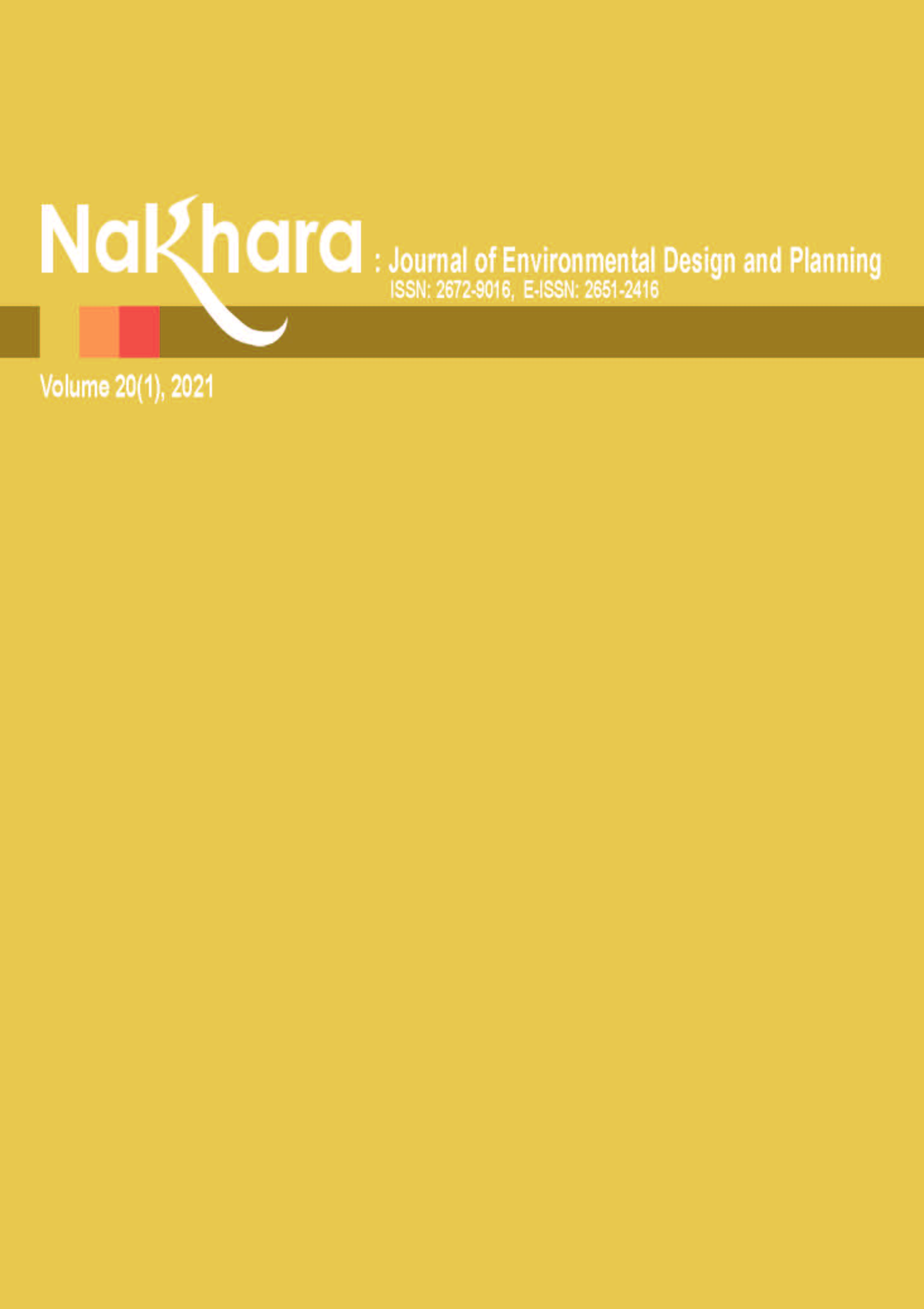Nodes and Streets: Exploring the Pedestrian Mobility Pattern in the Intersection of the Streets in Dhaka City
Main Article Content
Abstract
A viable pedestrian movement has always been a challenging for the urban planners and designers. The modern perception is to create a mobility towards pedestrian environment and at the same time limiting the dependency on vehicular movement. Pedestrians plays an important key role on reshaping nodes and the streets. The mental mapping of a pedestrian guides him to mobilize from one point to another and creates a pattern of an individual. When hundreds of points are created by the pedestrians a new order of network has created and different functions are intervened often to support them. These changes are responsible for the urban fabric to create a certain dimension and a vibrant network of movement.
Dhaka, the capital city of Bangladesh is thriving on vehicular dependency movement but majority of the population are still pedestrians and depends only on public transports. Pedestrian population is dramatically increased due to constant migration of labor incentive market, better employment and fast moving lifestyle. But although the pedestrians are responsible for the vibrant environment due to their mobility pattern, a major upheaval also occur for the unplanned and haphazard street functions on nodal points to serve the pedestrians. In this paper, evaluates the causes of pedestrian movement pattern, illustrate the problems and ineffective functions that creates a node. And finally on the basis of analysis, an outcome of urban node principle has been proposed, serving more effective movements and holistic kind of functional urbanism.
Article Details

This work is licensed under a Creative Commons Attribution-NonCommercial-NoDerivatives 4.0 International License.
References
Alexander, C. (1987). A new theory of urban design. Oxford University Press. https://hdl.handle.net/2027/mdp.39015012221381?urlappend=%3Bsignon=swle:https://shibidp.cit.cornell.edu/idp/shibboleth
Anas, A., Arnott, R., & Small, K. A. (1998). Urban spatial structure. Journal of Economic Literature, 36(3), 1426–1464. http://www.jstor.org/stable/2564805
Bangladesh Bureau of Statistics. (2011). 2011 Population & housing census: Preliminary results. Dhaka: Bangladesh. https://catalog.ihsn.org/index.php/catalog/4376
Bentley, I., Alcock, A., Murrain, P., McGlynn, S., & Smith, G. (2013). Responsive environments: a manual for designers. Architectural Press.
Berman, M. (1988). All that is solid melts into air: The experience of modernity. Penguin Books. https://catalog.hathitrust.org/Record/003151690?signon=swle:https://shibidp.cit.cornell.edu/idp/shibboleth
Bierlaire, M., Antonini, G., & Weber, M. (2007). Behavioural dynamics for pedestrians. In K. W. Axhausen (Ed.), Moving through nets: the physical and social dimensions of travel (pp. 81–105). Emerald Publishing Limited.
de Smith, M. J., Goodchild, M. F., & Longley, P. A. (2007). Geospatial analysis: A comprehensive guide to principles, techniques and software tools. Troubador Publishing Ltd.
Hillier, B. (1996). Cities as movement economies. Urban Design International (London, England), 1(1), 41–60. https://doi.org/10.1057/udi.1996.5
Imon, S. S. (2016). Urban design and quality of life in Dhaka. In M. Rahman (Ed.), Dhaka: An Urban Reader. Dhaka: University Press Limited.
Jacobs, A. B. (1993). Great streets. MIT Press.
Kim, C. I. (2017). Urban spatial structure, housing markets, and resilience to natural hazards. Massachusetts Institute of Technology.
Krier, R. (1991). Urban space. Academy Editions.
Laube, P. (2009). Progress in movement pattern analysis. In B. Gottfried & H. Aghajan (Eds.), Behaviour Monitoring and Interpretation - Ambient Assisted Living, (pp. 43–71). IOS Press. https://doi.org/10.3233/978-1-60750-048-3-43
Lynch, K. (1960). The image of the city. MIT Press.
Mahmud, S. M. S. (2009). Identify the deficiencies of landuse-transport development in Dhaka City. Bangladesh University of Engineering and Technology.
Marshall, S. (2004). Streets & patterns: The structure of urban geometry. Routledge.
Metrolinx. (2016). GO rail station access plan. http://www.metrolinx.com/en/regionalplanning/projectevaluation/studies/GO_Rail_Station_Access_Plan_EN.pdf
Nakamura, K. (2016). The spatial relationship between pedestrian flows and street characteristics around multiple destinations. IATSS Research, 39(2), 156–163. https://doi.org/https://doi.org/10.1016/j.iatssr.2015.08.001
Owens, P. M. (1993). Neighborhood form and pedestrian life: Taking a closer look. Landscape and Urban Planning, 26(1), 115–135. https://doi.org/10.1016/0169-2046(93)90011-2
Rajdhani Unnayan Katripakkho. (2015). Draft Dhaka structure plan (2016-2035) report. Dhaka, Bangladesh.https://www.rehab-bd.org/img/home_attach/Dhaka Structure Plan (2016-2035).pdf
Voulgaris, C. T., Loukaitou-Sideris, A., & Taylor, B. (2015). Planning for pedestrian flows in rail rapid transit stations: Lessons from the state of current knowledge and practice. The Journal of Public Transportation, 18, 1–14.

